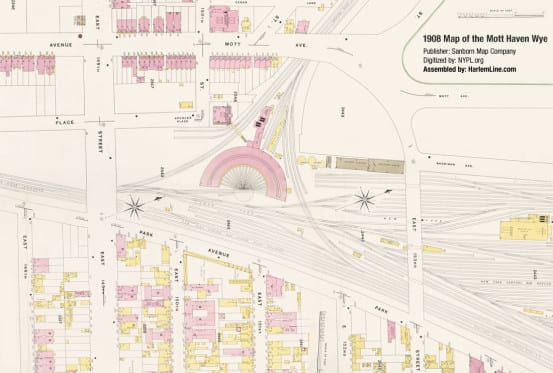
The Mott Haven wye area in 1908, note the turntable and large yard area for storing trains.
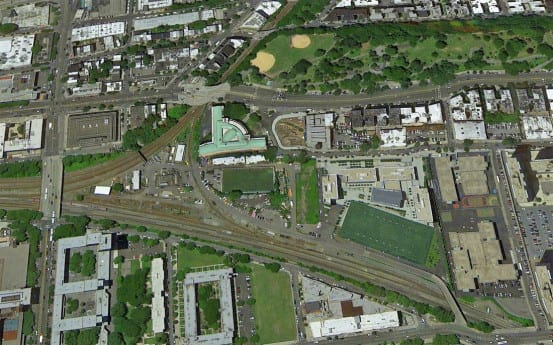
A modern look at the Mott Haven wye, much of the infrastructure from above is long gone.
In addition to having mechanical shops, water towers, a turntable and more, at Mott Haven, all types of passenger cars were cleaned and sterilized with the modern technologies of the day. Train conductors reports were reviewed for any mentions of ill people or deaths, wherein that car would be taken out of service and cleaned. The car would be sealed and treated for four hours with formaldehyde gas. This procedure would also be used every time immigrants had occupied the car. A normal train car, however, would have the floors scrubbed and the carpets and furnishings cleaned up. Scrubbing of every nook and cranny of the car occurred once every three months, except in the winter, when that happened once a week. Dust was removed with compressed air weekly, and after each journey the lavatory would be scrubbed and treated with muriatic acid. Four times a year the floors and seat legs were repainted, and every year the carpets and seatback cushions were removed and re-dyed.
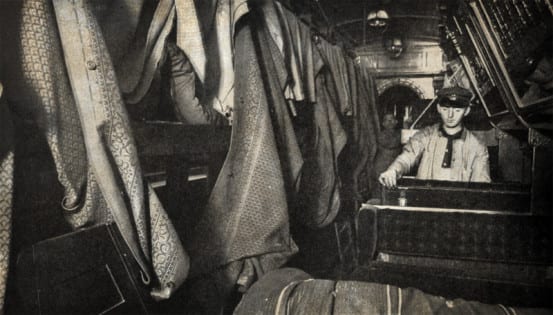
A sleeping car which carried an ill person is prepped for formaldehyde gas treatment
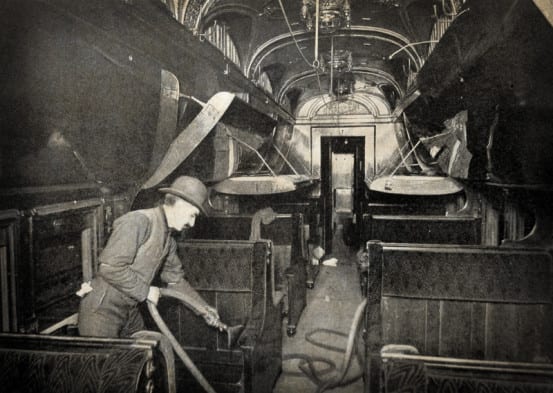
Cleaning the interior of a car with compressed air
A crew of cleaners stationed at Mott Haven would enter each car when it arrived and remove all portable items, like the aisle carpet, bottoms and backs of seats, curtains, mattresses and linens. Blankets would be treated with compressed air and freshened on a rack in the sun. Soiled blankets would of course, be washed. Unless outwardly dirty, blankets would only be fully washed every six months. Linens would be boiled, and carpets, mattresses and curtains would also be blown with compressed air. Cars were cleaned on special platforms at Mott Haven, which had pipes and hoses for the compressed air spread throughout. Lastly, wood would be polished and oiled, as was the exterior of the car.
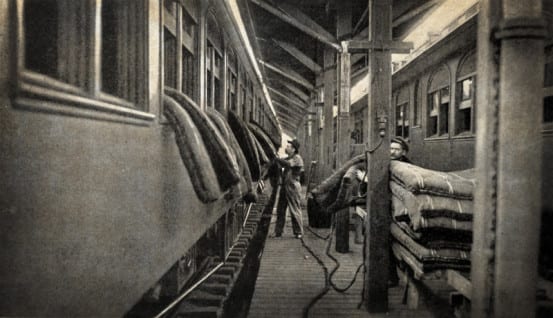
Removing the mattresses from the sleeping cars
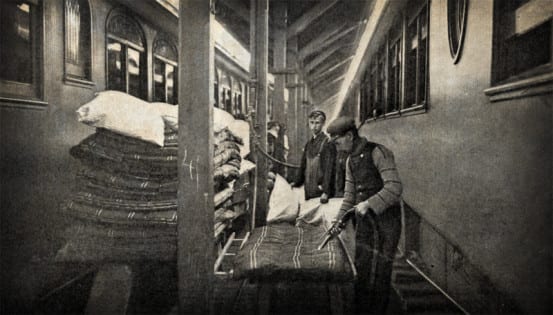
Cleaning the dust from bedding with compressed air at Mott Haven
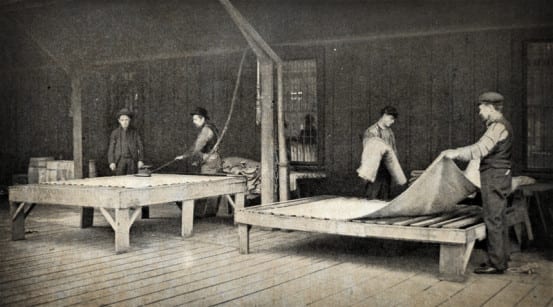
Cleaning the blankets and allowing them to air dry
Although the cleaning methods used seem rather ineffective to modern ears, this was the general process used by the New York Central in 1905. Thankfully at that time they didn’t have to worry about things such as Ebola – though the main concern seemed to be the spread of tuberculosis among train passengers.
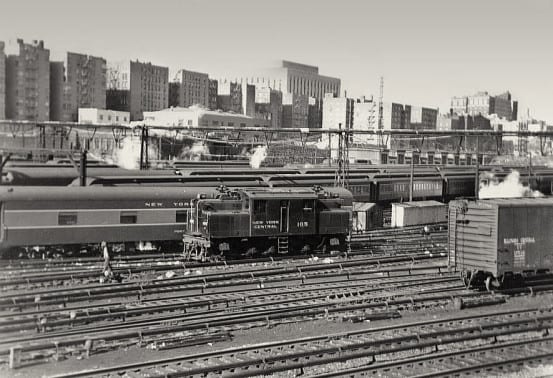
Mott Haven in the 1960s. Photo by Charles Warren.
Eventually both Grand Central Depot and Station became too small to accommodate the ever-increasing amount of trains operating into the city, and thus Mott Haven was often used as a storage point for trains. With the construction of the Terminal and its plentiful tracks, the Mott Haven facility certainly lost some of its stature. Nonetheless, it retained a laundry and mechanical department, among other services, until the 1960s. Reflecting the ever-changing landscape of railroad technology, the turntable was at some point removed for a switching tower, which still stands (albeit in poor shape), though it is merely used for storage today. The wye is still an important part of the railroad, and used to accommodate interline Harlem and New Haven Line trains going direct to Yankee Stadium. On most days, however, you’ll find one of Metro-North’s GP35s in wait, kept company by a small population of the Bronx’s feral cats.
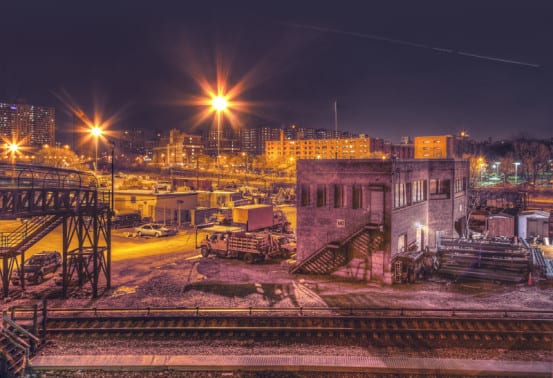
Hudson Line tracks and the old MO tower under the yard’s bright nighttime floodlights


A big job, at Mott Haven, was replentishing the dining cars. A big building, at the north end of the stub tracks, served as the commissary. In my day, in GCT, the services were moved from Mott Haven to the eastern-most lower level tracks in GCT. Few long-distance trains were on the card in the mid-’60s. It wasn’t quite the same.
As a student at Cardinal Hayes HS, I remember well the rr yard at Mott Haven, Now a resident of Westchester Co, I have traveled on the nearby rails thousand of times. So much has changed, so much!!!!!
During the late ’70s, when I was working for Amtrak’s On Board Services department out of its Chicago crew base, one of the nicest jobs I ever had was Assistant Dining Car Steward on trains 48 & 49, the Lake Shore Limited. We were assigned former Pennsy twin-unit diners (hence the need for an Assistant Steward) and we depended upon that GCT commissary to replenish our supplies for the return trip west. Tracks 1 through 10 were (essentially) the Terminal’s coach yard – and our consist was usually spotted on track 9 or 10. Fun times!
Sorry. Meant to say “western-most lower level tracks” (under Vanderbilt Ave.). There was no upper-level deck above those two tracks.
did you work with Johnny Allen and Bob McAvoy in the commissary in gct? do you remember Jay vogt from station masters office?
Brilliant city and land planning, eliminate rail yards close or in the cities in favor of truck congestion and resultant fumes in the city. Your tax dollars at work helping private real estate developers get richer at the expense of the public. I believe the term is reverse socialism….